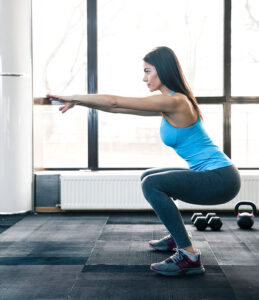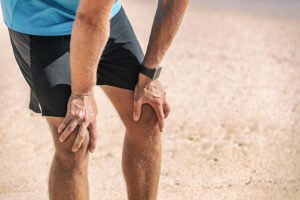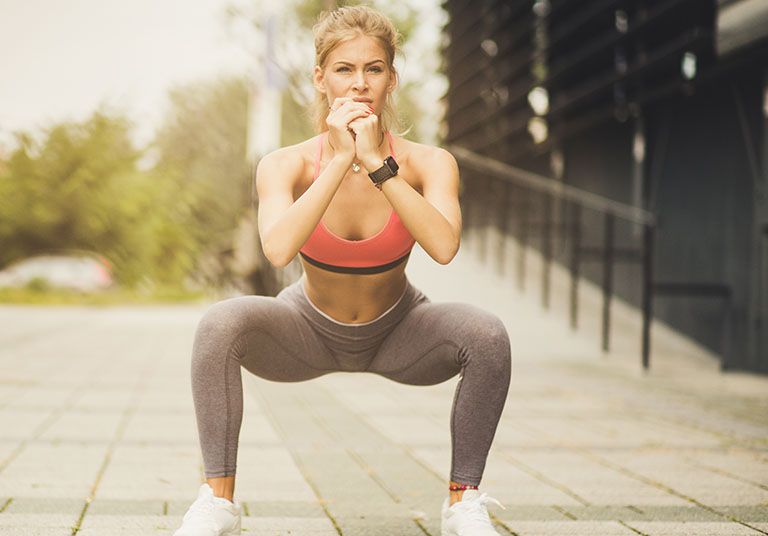Renowned for its contribution to lower limb strength, squats are a key exercise in most weightlifter’s repertoire. While great for building muscle, improving mobility and increasing core strength, not all squats are made equal. Done right, a proper squat form engages a host of muscle groups and provides a satisfying stretch. Done wrong and you could have an ineffective exercise at best, and seriously injure yourself at worst.
Learn more about perfecting the proper squat form so you can focus on the gains with these top tips from the physical therapists at Elite Integrated Therapy Centers.
Proper Squat Form Tips
BRACE YOUR CORE
One of the most important components of proper squat form is making sure you have properly activated your core. By engaging the core, the spine is braced not allowing for flexion or extension during the movement. Your low back should not round or have an excessive arch. Your hips should flex during a squat without movement at the lumbar spine. Start with unloaded squats to master your pattern. Use a wand or broom stick pressed against your back to see how much your back moves during your squat. The goal is to maintain the same contact and distance with the broomstick throughout the full movement.
KNEES OVER TOES

A common myth about proper squat form is “Don’t let your knees go past your toes”. This is a great cue for some people, but remember, everyone’s structure is different. Center mass of load, femur length, shin length, and foot length all play a role in knee positioning during squatting. If you have long legs and small feet, it would be hard to find a squat position where your knees don’t go over your toes. Hip and knee flexion should happen at a 1:1 ratio during the squatting motion. In short, your knees and hips should both be moving equally and together. The thought is that if we ban our knees going over our toes, then we have reduced the torque on our knees. However, that torque is then translated to the hip joint. Fry, Smith, and Schilling reported in the Journal of Strength and Conditioning Research that when blocking the knees, we reduce torque by 22% at the knee joint, but increase torque at the hips by 1,070%. We have also changed the angle of the hip joint which increases the moment arm and puts more stress on the lumbar spine. Therefore, the stress you save your knees is multiplied and wreaks havoc on other parts of your body like your hips and back! In summary, sometimes the knees should not track over the toes, but sometimes they should. This cue is not a “one size fits all”. An individual’s structure and the type of movement performed dictate knee positioning. There is a place for both methods in proper squat form.
Common Squat Form Mistakes
BUCKLING KNEES

One common mistake people make when practicing proper squat form is knee valgus. Knee valgus is when your knees move inward towards midline during functional movements. This usually occurs when your hip adductors (the muscles on the inside of your thighs) overpower your hip abductors (the muscles on the outside of your thighs). Over time, not correcting this mistake could lead to injuries. To correct knee valgus, start with a resistance band above the knees to help give you a tactile cue of pressing out against the band as you are squatting. Your knees should align with the second to third toe during the movement pattern. Having the band guide your knees outward will help you activate your abductors and lead to better knee alignment in your squats.
IMPROPER NECK POSITION
 Be mindful of your head and neck position during your squats. Do not lead with the crown of your head! You should not be looking up and have excessive extension through your neck. This is a common mistake that often goes unnoticed. For proper squat form, you want to have a neutral neck position and keep your eyesight gazing about six to eight feet in front of you. Imagine a dowel running from ear to ear. Do a chin tuck about that axis and maintain that position without moving your head or neck throughout the squat.
Be mindful of your head and neck position during your squats. Do not lead with the crown of your head! You should not be looking up and have excessive extension through your neck. This is a common mistake that often goes unnoticed. For proper squat form, you want to have a neutral neck position and keep your eyesight gazing about six to eight feet in front of you. Imagine a dowel running from ear to ear. Do a chin tuck about that axis and maintain that position without moving your head or neck throughout the squat.
Perfect Your Squat Form with Elite
Our team is here to help you perfect the proper squat form and maximize your workouts. With Elite Performance, you get guidance and support from clinical experts to optimize movements in group and individual settings.
If you’re struggling with exercise related injuries, our team is here to help with that too. Reach out to schedule an appointment at one of our clinics located throughout South Carolina today.


